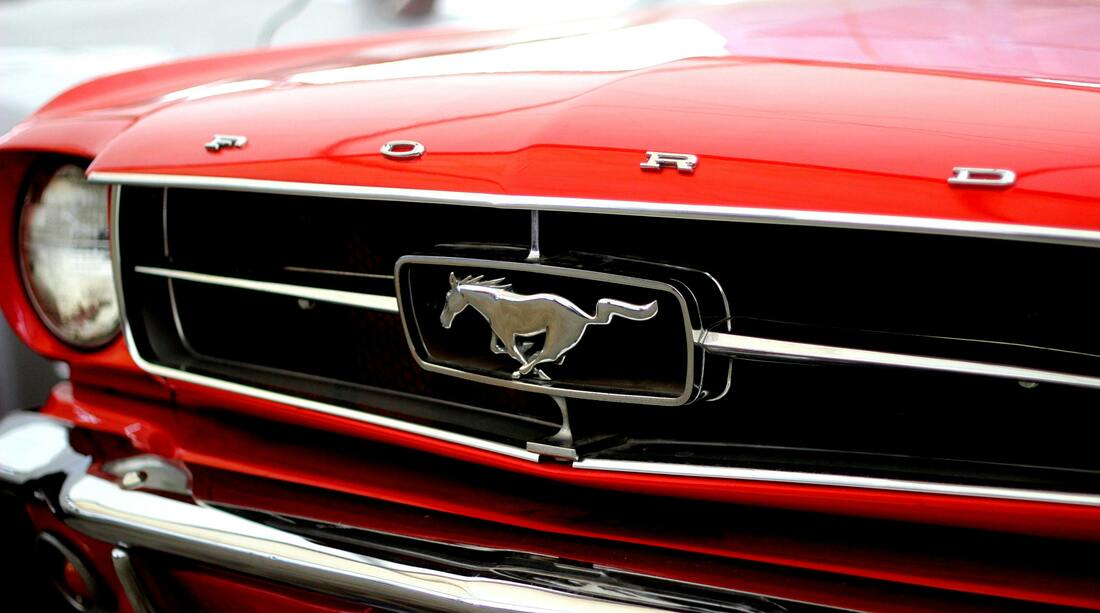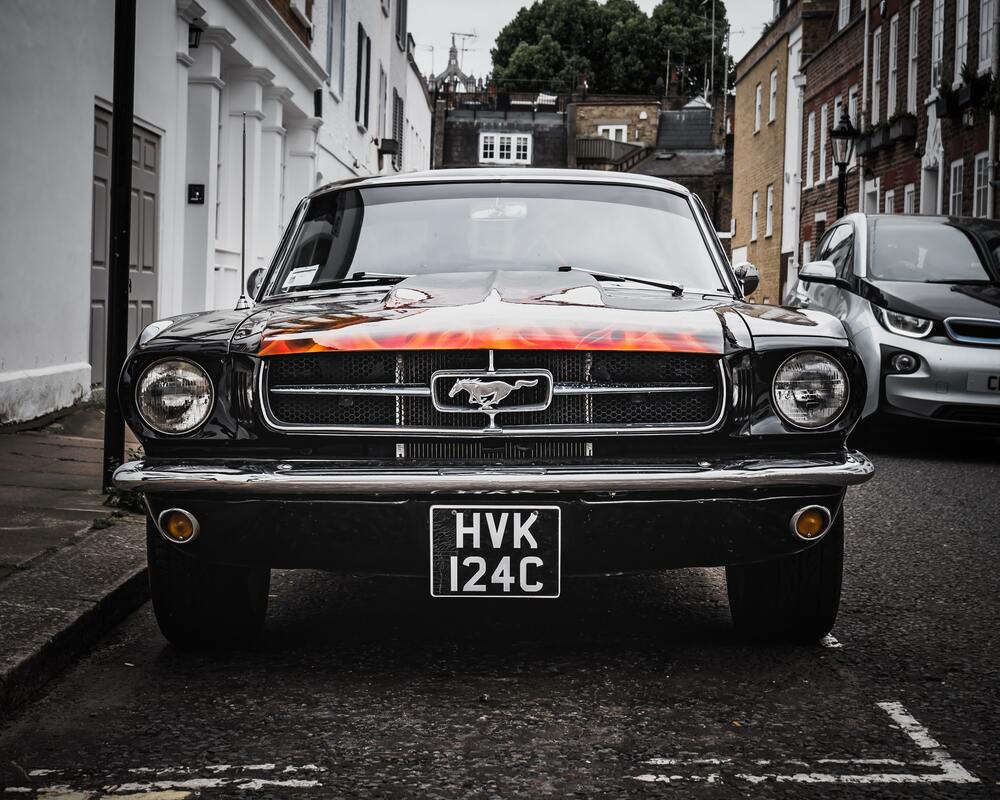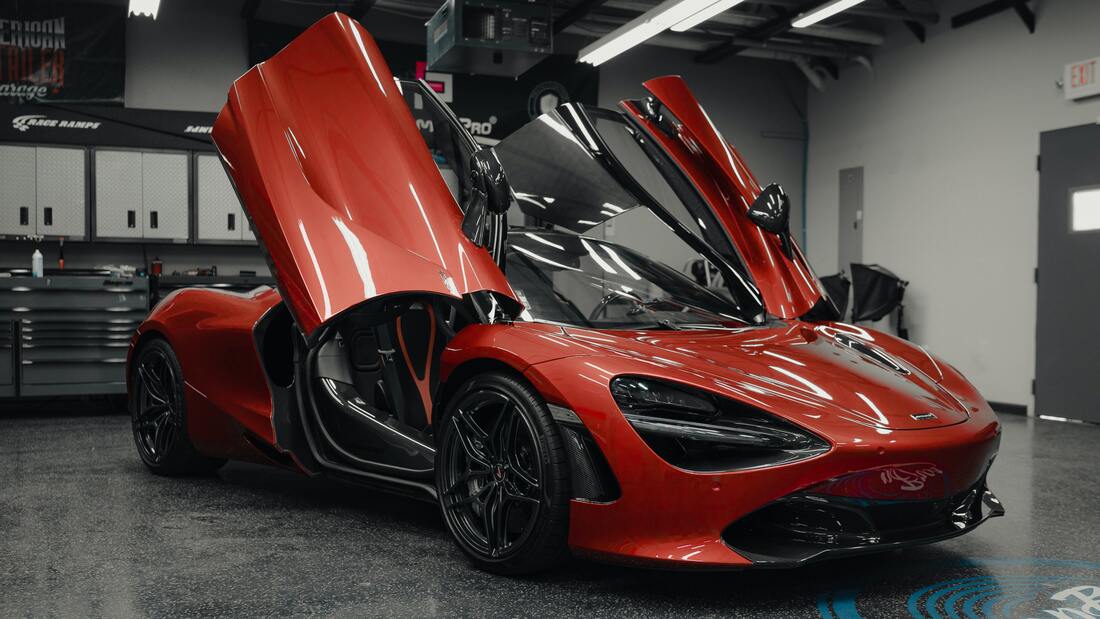|
The Ford Bronco re-emerged in 2021, reviving a legendary nameplate known for its rugged capability. Within the Bronco lineup, the Badlands trim stands out for its focus on off-road performance. For those seeking to push the Bronco Badlands to its absolute limits, the optional Sasquatch Package beckons. But is this add-on worth the additional cost? Let's delve into the features of the Sasquatch Package and explore the potential benefits for off-road enthusiasts.
What Does Sasquatch Offer? The Sasquatch Package is a collection of upgrades designed to enhance the Bronco's off-road prowess. The centerpiece of the package is a set of 35-inch Goodyear Territory Mud-Terrain tires. These larger tires provide increased ground clearance, crucial for navigating rocky terrain and uneven surfaces. Additionally, the mud-terrain tread pattern offers superior traction in loose dirt, mud, and sand. The package doesn't stop at tires. It also includes 17-inch beadlock-capable wheels. These wheels feature a locking ring that secures the tire to the rim, preventing slippage even in extreme off-road situations. This can be particularly beneficial when tackling challenging terrain with low tire pressure. Furthermore, the Sasquatch Package equips the Bronco Badlands with electronically locking front and rear differentials. When engaged, these differentials allow for better power distribution across both wheels on an axle, maximizing traction and preventing a single spinning wheel from hindering forward progress. Finally, the 2024 Bronco Badlands Sasquatch Package comes with upgraded suspension featuring higher ride height. This translates to improved ground clearance and better approach, breakover, and departure angles, all of which are essential for conquering obstacles on the trail. Considering the Cost The Sasquatch Package undoubtedly elevates the Bronco Badlands' off-road capability. However, it's important to factor in the additional cost. As of July 2024, the package adds a significant sum to the price tag of the Bronco Badlands. Before committing to the Sasquatch Package, potential buyers should critically evaluate their intended use for the Bronco. For those who plan to primarily utilize the Bronco on paved roads or light off-road trails, the standard Badlands trim might suffice. Its 33-inch tires and open differentials offer ample capability for casual exploration. Beyond Capability: Practical Considerations The Sasquatch Package's larger tires and increased ride height can have some drawbacks. Fuel efficiency is likely to decrease, with the larger tires offering more rolling resistance. Maneuverability, particularly at lower speeds, might also be slightly compromised due to the wider footprint of the 35-inch tires. Additionally, the increased ride height can make ingress and egress more challenging, especially for shorter passengers. The Verdict: Tailoring the Bronco to Your Needs The Ford Bronco Badlands Sasquatch Package is a compelling option for serious off-road enthusiasts. The larger tires, locking differentials, and upgraded suspension significantly enhance the vehicle's ability to handle challenging terrain. However, the added cost and potential drawbacks in terms of fuel efficiency, maneuverability, and passenger access must be carefully considered. For those who prioritize pure off-road capability and plan to take their Bronco on demanding adventures, the Sasquatch Package is a worthwhile investment. However, for those who intend to use their Bronco primarily for on-road driving or light off-road excursions, the standard Badlands trim might be a more practical and budget-friendly choice. Ultimately, the decision depends on individual needs and priorities.
0 Comments
The 2024 24 Hours of Le Mans saw the European debut of the highly anticipated 2025 Ford Mustang GTD. This new offering from Ford Performance positions itself as a powerful and luxurious track-focused machine, boasting over 800 horsepower and a driver-centric interior.
Unveiling the Powerhouse The Mustang GTD packs a punch under the hood with a supercharged 5.2L V8 engine. Specific details regarding power delivery and torque figures are yet to be revealed by Ford. However, early reports suggest the engine is capable of propelling the car to a top speed exceeding 190 mph. Power is channeled through a modifiable suspension system, allowing drivers to fine-tune the car's handling characteristics for various track conditions. Completing the performance package is a titanium exhaust system, promising an aggressive and thrilling soundtrack. Performance Pack Pushes Limits Ford offers an optional Performance Pack designed to further enhance the Mustang GTD's track prowess. This package equips the car with a series of aerodynamic elements, including dive planes, a front splitter, underbody flaps, and a rear wing with a drag-reduction system. These features work together to improve downforce and stability at high speeds. Additionally, the Performance Pack incorporates lightweight 20-inch magnesium wheels and reduces sound-deadening materials, contributing to a weight reduction that translates to sharper handling. Carbon Fiber Flair - The Carbon Series The Mustang GTD Carbon Series takes the performance and aesthetics of the base model a step further. This variant incorporates exposed carbon-fiber elements throughout the exterior, showcasing the lightweight and structurally rigid material. While specific details on the extent of carbon fiber usage are unavailable, it can be expected to encompass components like the hood, fenders, and potentially, some interior trim pieces. Driver-Focused Interior Revealed While initial reveals of the Mustang GTD focused on its exterior, recent updates have provided a glimpse into the car's interior. The cabin prioritizes the driver's experience with a thick-rimmed, flat-bottom steering wheel that incorporates buttons for adjusting suspension firmness and exhaust modes. Large 3D-printed titanium paddle shifters flank the steering wheel, and standard Recaro seats provide exceptional support during high-performance driving. Titanium trim accents are available on the gear selector, adding a touch of luxury to the driver environment. Interestingly, the Mustang GTD forgoes a traditional rear seat, opting instead for functional rear windows, one showcasing the traditional view out back and the other offering a unique look at the car's exposed pushrod-style rear suspension. Price and Availability Ford has yet to announce official pricing or availability information for the 2025 Mustang GTD. Considering its high-performance focus and premium materials, the car is expected to carry a hefty price tag. Initial reports suggest a starting price well above $300,000. Availability details remain unclear, but with the car's debut at Le Mans, a European launch seems likely in the coming year, with a potential North American release to follow. The Legacy of Mustang Performance The 2025 Mustang GTD represents the latest chapter in Ford's long history of producing high-performance Mustangs. The car caters to a niche market of driving enthusiasts seeking a powerful and luxurious track-focused machine. While specific details regarding performance and pricing are still forthcoming, the Mustang GTD promises to be a formidable contender in the high-performance car segment. Electric vehicles (EVs) have become a growing segment of the automotive industry, but their price tags often remain a barrier for many consumers. In an effort to broaden the appeal of EVs, Ford is developing a new, low-cost platform specifically designed for smaller, more affordable electric vehicles.
Shifting Gears: A Focus on Budget-Friendly EVs Ford's current EV offerings, such as the Mustang Mach-E and F-150 Lightning, cater to the performance and truck segments, respectively. While these vehicles have received positive reviews, their starting prices position them outside the reach of budget-conscious buyers. Recognizing this gap in the market, Ford announced the formation of a dedicated team in 2022, tasked with developing a platform that could underpin a new generation of affordable electric vehicles. The Skunkworks Approach: Secrecy Breeds Innovation Ford adopted a unique approach to developing this platform. A small, independent team, often referred to as a "skunkworks" unit, was established in California. Operating with a high degree of autonomy, this team was able to work outside the traditional bureaucratic structures of a large corporation, fostering a more agile and innovative environment. The Future of Ford EVs: A Platform Built for Scale Details about the new platform remain scarce, but Ford has revealed some key aspects. The platform is designed to be flexible, allowing it to accommodate a variety of smaller vehicle configurations, potentially including sedans, SUVs, and even compact trucks. This modularity is crucial for achieving economies of scale, which will ultimately translate into lower production costs and more competitive pricing for consumers. Battery Tech: Balancing Cost and Performance Battery technology is a major factor influencing the cost of an EV. Ford has indicated that the new platform will initially utilize Lithium Iron Phosphate (also called LFP for lithium ferro phosphate) batteries. These offer a lower-cost alternative to traditional lithium-ion batteries but may have slightly less energy density. This trade-off between affordability and range is a common consideration for developing budget-friendly EVs. The Road Ahead: Timeline and Target Market According to industry sources, the first vehicle built on the new platform is expected to arrive in 2026. Targeting a starting price around $25,000, this new generation of electric Fords will directly compete with similar offerings planned by Tesla and other automakers vying for a larger share of the budget EV market. Ford's Current EV Landscape: A Bridge to the Future While the new platform represents a significant step towards affordability, Ford's current EV offerings provide a glimpse into the brand's overall electrification strategy. The Mustang Mach-E, a performance-oriented electric SUV, and the F-150 Lightning, an electric version of America's best-selling truck, showcase Ford's commitment to electrifying popular vehicle segments. These early offerings cater to a specific segment of the EV market, and their success will likely provide valuable data and experience for the development of future, more affordable EVs. A Broader EV Spectrum Ford's development of a low-cost EV platform signifies a strategic shift towards making electric vehicles more accessible to a wider range of consumers. The success of this platform will depend on its ability to deliver on the promise of affordability without sacrificing quality or range. By expanding its EV offerings beyond the premium and performance segments, Ford is well-positioned to compete more effectively in the rapidly growing electric vehicle market. The October 2023 SEMA car show featured the 2024 Ford Ranger Ford Performance ORV Concept. A concept package designed to boost off-road performance, the Ranger ORV is envisioned as a 2024 Ranger XLT 4X4 with a SuperCrew double cab configuration.
Powering the performance is the Ranger’s standard 270 horsepower 2.3-liter inline-four engine, which offers 310 lb-ft of torque. The mid-size engine also features EcoBoost capabilities and a 10-speed automatic transmission, which minimizes the need for aftermarket add-ons. Other key features of the ORV concept include SOLIS lights, an onboard air compressor, and a 47-quart freezer/refrigerator. Among the significant drivers of improved off-roading performance is an ARB overland suspension kit that smooths the ride and front and rear bumpers with more recovery points. The latter helps efficiently recover the vehicle if it becomes stuck or bogged by connecting a snatch strap or winch to the recovery point. Having more recovery points also enables side-angled pulls that help avoid structural issues such as torsional twists. For 2024, Ford fully updated its Mustang GT while keeping defining attributes such as a powerful V8 engine up front and a limited-slip differential in the back. One of the most significant changes is a major bump-up in power that doesn’t require aftermarket wizardry. The OEM supercharger package boosts power to at least 800 horsepower or around double the 2010 version of the GT.
The additional power comes from a three-liter Whipple Gen 6 supercharger that displaces more air than many full engines. Among the modifications that enable the exceptional performance are a 92-millimeter throttle body, dual 120 mm air intakes, and high-flow injectors for the billet fuel rails. In addition, the system features an advanced water-to-air intercooler that ensures a reasonable temperature for compressed air feeding the engine. With this kind of performance under the hood, the Mustang GT rivals the 808-horsepower Dodge Challenger SRT Demon for bang for the buck. Getting the supercharger kit installed is as simple as making an appointment with any dealer or ASE-certified technician. CARB emissions compliant and equipped with a three-year, 36,000-mile warranty, it’s legal to use across all 50 states and can be installed in even base models of the Mustang GT. The Veterans of Foreign Wars (VFW) and American Legion are two of the oldest, largest, and best-known veterans' associations in the United States. For over a century, these groups have offered various services to veterans and their families, including social support, benefits assistance, and lobbying for veterans' rights. However, the two groups differ in a few ways.
Veterans who have served in combat zones abroad or received hostile fire pay—a special monthly payment made to military personnel exposed to hostile fire, hostile mine explosions, or other events that place them in danger—are the only veterans eligible to join the VFW. American Legion membership is open to all veterans who completed at least one day of active duty in the military and received an honorable discharge. The United States Air Force, Navy, Army, Coast Guard, and Marine Corps officers may belong to either association. With over 2.4 million members, the American Legion is currently the bigger of the two organizations. More than 1.4 million people belong to the VFW. Finally, The VFW focuses more on providing services to veterans and their families, such as healthcare, after-service career opportunities, and emotional and financial help. On the other hand, the American Legion has an expanded mission that includes Americanism advocacy, youth programs, and community service. To run their operations, both associations depend on donations and volunteers. To demonstrate your support for the men and women who work to keep our nation safe and to find out more about the work that the VFW and American Legion perform, you can donate money online through their websites or by mail, volunteer your time at a local post, or attend their yearly events, which include dinners, parades, and fundraisers. After being out of production for over 20 years, Ford revisited the Ford Bronco in 2021. The newest Bronco, available in multiple trim levels, can handle any off-road terrain, from sand dunes to rock crawls, thanks to its features.
The G.O.A.T modes (Goes Over Any type of Terrain), which offer eight distinct settings customized for various driving conditions, including normal, snow, mud, and slippery, is one of the main off-road features of the recently released Ford Bronco. Drivers only need to select the appropriate G.O.A.T mode based on the type of off-road terrain they're navigating, and the Bronco will maximize driving performance by adjusting traction control, shifting points, and throttle sensitivity. There is also trail cruise control available on the Ford Bronco. With this feature, a driver may focus on steering and avoiding obstacles by setting a desired speed that the vehicle will maintain automatically—even across uneven terrain. The trail turn assist feature on the Bronco allows for a narrower turning radius by applying brakes to the inner rear wheel, improving the vehicle's mobility in confined spaces. Detachable doors and a roof panel are additional features of the new Ford Bronco. In addition to affording drivers the freedom to enjoy open-air off-roading during the sweltering summer months, this feature improves visibility of the surrounding area, making it simpler for drivers to maneuver through difficult trails and obstacles. All Bronco models, manual or automatic, can be equipped with the optional Sasquatch package. The Ford Bronco gains several upgrades from this package that make it an even greater beast off-road, including 35-inch Goodyear mud terrain tires, 17-inch alloy wheels with beadlock capability, and an elevated ride height to protect the undercarriage better. Jeep is now one of the world's most recognizable automobile brands. In many parts of the world, the brand name is synonymous with SUVs. However, the origins of this car brand and its subsequent evolution to its current state are quite complicated. The origins of its name (Jeep) have also been hotly debated.
While some speculate that Jeep originates from the Popeye comic character Eugene the Jeep, others argue that it is derived from GP, which stands for general purpose. Regardless of how the name came to be, the brand started out as a World War II vehicle for the United States army. To effectively deal with the threat of an emerging second world war in the 1940s, the American Army needed a vehicle to replace the motorcycle and horse. The War Department desired a quick reconnaissance vehicle that could also serve as a general-purpose mode of transportation on the battlefield. As a result, the army requested that American automakers create prototypes. At the time, the Butler, Pennsylvania-based American Bantam Car Company, which had begun producing licensed copies of British-built Austin cars, was facing severe financial difficulties. It was, however, one of only three car manufacturers to respond. The second is Willys-Overland of Toledo, Ohio, and the third is Ford Motor Company. Bantam co-created the first prototype military Jeep, Willy's Quad. Karl Probst, a Detroit-based auto designer, created the prototype in 18 hours and assembled it in 75 days. Interestingly, during initial testing in September 1940, army officials discovered that Bantam's 1,840-pound prototype exceeded the Army's design parameters. However, war department officials questioned Bantam's ability to meet military production demands. As a result, Willys-Overland and Ford Motor Company asked to use the Probst design as the basis for their versions of Bantam's vehicle. The army then subjected vehicles from all three companies to a series of tests in Maryland. However, Bantam lost the final bids, and the army awarded Willys-Overland the first production contract. Due to high production demand, the army awarded Ford a second production contract for the same design. Throughout the war, Ford attempted to distinguish its Jeep design from the Willys by brandishing an "F" on several parts of the vehicle. Willys eventually retained the design rights after the war. Willys modified the MB Jeep for civilian use after the war. These modifications included upgraded seats and headlights and the addition of a tailgate. Willys enacted these changes to take advantage of the vehicle's popularity at the time. The company named its civilian MBs the Willys CJ-2A. Willys also introduced several other civilian-oriented vehicles, including the 1946 Willys Station Wagon, the 1947 Jeep pickup, and the Jeepster (a small convertible). These vehicles would mark the beginning of Jeep as an independent automobile brand. Jeep would eventually develop other recreational vehicles, such as the CJ-5, which lasted from 1954 to 1984, making it the Jeep model with the longest production run. The M-170 and 1957 FC-170 were two others (meaning forward control). These vehicles helped Jeep build a loyal but small following in the decades following WWII. However, the US military would remain its primary customer. Willys-Overland was eventually purchased by Kaiser Manufacturing Co. in 1953 and renamed Kaiser-Jeep Corp. in 1963. American Motors later acquired it in 1969. Fiat-Chrysler Automobiles now owns Jeep (FCA). The Ford Mustang, a classic American car designed by the Ford Motor Company, is one of the world's most recognizable and adored automobiles. Since its first production in 1964, the Mustang has undergone evolutionary changes to become the world's best-selling sports car and one of America's favorites.
With a large hood, a short rear deck, and a wide stance that conveyed a sense of power and speed, the first-generation Mustang was revolutionary for its time. It was available in various body styles, including a fastback, convertible, and coupe, and powered by a V8 engine producing 210 hp. For the next five generations, the Ford Mustang saw numerous design changes and updates that helped it retain its iconic status and character. Few vehicles have had such an indelible imprint on American automotive culture as the Ford Mustang. Since its debut in 1964, the Mustang, with its sporty design and strong engines, has appealed to younger car enthusiasts. The iconic vehicle has had a massive impact on the American automobile industry, challenging all preconceived notions about how an American automobile should look and spawning its own subculture. Around the same time muscle car aficionados began to recognize the Mustang's power and “cool factor,” Hollywood began to take note. The Mustang debuted in the James Bond film “Goldfinger” in 1964. However, it was the 1968 film “Bullitt,” starring Steve McQueen, that propelled it to stardom, as the film featured an iconic car chase scene with a 1968 Mustang GT 390 Fastback racing through the streets of San Francisco. Since then, the Mustang has appeared in numerous films and TV series, including “John Wick,” “Knight Rider,” and “Charlie's Angels,” cementing its place in American car culture and popular culture. The Ford Mustang set the standard for other sporty vehicles as the first pony car (an affordable, compact, and stylish sporty American car). The introduction of the pony car segment enabled individuals from diverse backgrounds to enjoy the automobile's style and performance. Its affordability also symbolized American ingenuity, and it became a popular choice for many sports car enthusiasts. The Mustang's fame also ignited competition among car manufacturers, inspiring them to release similar models, such as the Chevy Camaro, Dodge Charger, and Pontiac Firebird. The introduction of the Camaro, in particular, sparked a long-standing competition with the Ford Mustang. But despite the rivalry and competition, the Mustang remains the only model that has never been phased out of production. Even today, the Ford Mustang is still a highly sought-after collector's automobile. Despite its iconic past, the Ford Motor Company is always looking toward developing better Mustang models with more aerodynamic designs, increased power, and improved fuel efficiency. Additionally, with advanced features such as a pre-collision detection system and a lane-keeping system added in the new models, the Ford Mustang embraces new technologies while maintaining its rich history. The sixth-generation Ford Mustang, the current model on sale, which has been in production since 2015, also underwent significant redesigns. This was the first time a Mustang had independent rear suspension to improve stability. It was also the first time a right-hand-drive model was marketed worldwide. The model came with a 2.3L EcoBoost engine generating 435 hp and a 5.0L Coyote V8 engine option. With the next generation Mustang scheduled for release in 2024, the model is set to offer a reworked Coyote V-8 engine with 500 hp and a 2.3L EcoBoost engine with 315hp. Generally, most people prefer automatic transmission vehicles because they make driving easier. The automatic system performs a vital function that a driver would otherwise have to undertake manually. It executes gear changes automatically as you drive.
Vehicles equipped with automatic transmissions have a launch control feature. The feature allows you to get a good start when you want to zoom off and leave other drivers behind. With manual gearboxes, you are in charge of launching the car. To keep the automatic transmission system running smoothly, you must avoid mistakes, such as building the revs up when your car is in neutral and switching to drive 'D". This causes harm to the gearbox and gives a jerky launch. To launch an automatic transmission vehicle correctly, keep it in Drive, then depress the brake pedal, build several revs, and to launch, let go of the brake pedal. Also, launching a car too frequently may affect the engine and gearbox components. When the car is in neutral, you are not in full control, and should a potential hazard suddenly show up; you might not have enough time to react. Also, the neutral position damages your car transmission because it blocks the oil supply. Because of the lack of proper lubrication, the vehicle's smooth transmission process slows down. The subsequent wear and tear might damage your car, whose repair cost might exceed the value of fuel saved. Similar to manual cars, putting the automatic vehicle into reverse without first stopping can lead to gearbox failure. When you shift gears, the mechanism uses a transmission band and clutches to make the shifting. Therefore, switching from "D" to "R" (or vice versa) should only come after a complete halt. Switching when in motion causes unnecessary wear and tear. The "P" mode in automatic transmission cars shifts the transmission to a parking mode. This disables your vehicle from moving either forward or backward. When the lever is shifted to "P" to stop the cog from rotating, the 'gearbox uses a parking pawl which then disables the car from all movement. However, when you do the shifting in a moving car, it damages the transmission. Avoid this practice unless the vehicle is stationary. Avoid driving your vehicle hard without warming up the engine, particularly during winter. When the weather is cold, engine oil thickens and moves slowly. Let the engine run for a while so that the fuel runs into the transmission system and all its components. Shifting into gear and rapidly driving at high speed may lead to severe internal engine damage. To run properly, an automatic car depends on fluid pressure. The fuel also helps the engine and other components to stay lubricated and cool. So, to avoid faster engine wear, avoid keeping the oil tank gauge low. Finally, avoid driving your automatic car through deep water. As they get cold or hot, fluids in the automatic transmission system contract and expand. The transmission is equipped with a vent that helps relieve any built-up pressure. When you drive through deep water, water can be sucked into the transmission via the vent. If you are lucky, you might successfully flush out the water. Otherwise, the transmission gets destroyed and needs replacing. |
AuthorLeo Sfikas - General Manager of the Nation's Top Dealerships. Archives
March 2023
Categories |









 RSS Feed
RSS Feed
